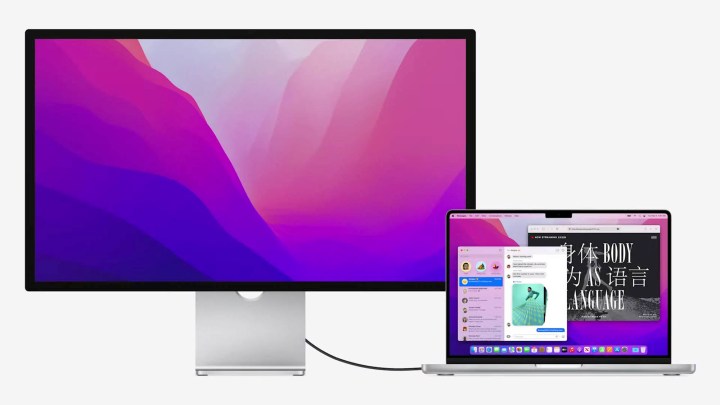Apple is working on a 27-inch mini-LED display with ProMotion technology, according to supply chain analyst Ross Young. But there’s a catch — you won’t be able to get it until at least 2023.
The display is a stand-alone monitor and is likely the successor to the expensive Pro Display XDR, or it could be a lower-priced, consumer-friendly display more like the Apple Studio Display. Details are a little murky at this point, but the inclusion of mini-LED and ProMotion means it will be on the higher end of the market.

Mini-LED is a breakthrough panel technology that’s still fairly new. The LEDs are much smaller and more of them can fit inside a single panel of the screen, meaning you get more vibrant colors and better light control. 8K televisions use mini-LED. They’re also more expensive, which is why the tech has only appeared in Apple’s higher-end products, such as the Pro Display XDR, iPad Pro, and MacBook Pro 14-inch and 16-inch.
ProMotion is an Apple technology also found in the iPad Pro and MacBook Pro models that enables adaptive screen refresh rates of up to 120Hz and creates smooth scrolling with no lag. Coupled with mini-LED, the rumored display would be one of the most sought-after creative monitors on the market.
But in an interview with MacRumors, Ross Young spells out the bad news: This new Apple display won’t be available until at least 2023.
Apple has had problems getting the display mass produced, thanks to supply constraints and disruptions. According to Young, Apple originally planned to announce the display at WWDC 2022 back in June but had to delay the announcement. The next target was the October announcement when Apple usually drops new iPad and Mac models.
However, Young says Apple won’t be able to announce the display in October, either. Spring 2023 is now the earliest Apple can announce it, and that’s only if production in China gets back on track.
Many electronic manufacturers, including Apple, are facing part shortages due to disruptions originating in China. Apple produces more than 50% of its products in China, many in cities that are now on strict rolling lockdowns.
Editors’ Recommendations




